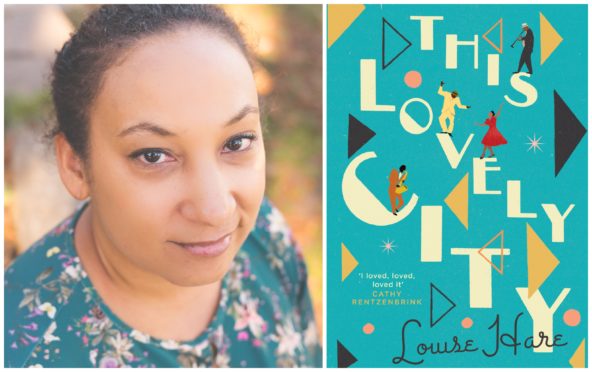
It is being hailed as the biggest debut of 2020. But new author, Louise Hare, 39, admits her first published novel This Lovely City was “sort of an accident.”
Louise, who is appearing at Glasgow’s Aye Write! Festival – on from Thursday to March 29 – tells P.S.: “I was at Birkbeck, University of London, and I had to write a short story. I had done a tour of the tunnels under a tube station where Windrush passengers were put when they first arrived. I’d written about a character called Lawrie and about his shock of arriving and being shoved underground. The feedback in class was, ‘What happened next?’ so I wrote the book.”
The topic sits well with Glasgow’s bookfest that this year puts under the spotlight issues like Windrush, social media, feminism, and the climate emergency. It will also showcase authors including Maggie O’ Farrell, Val McDermid, Joanna Trollope, Bake-Off judge Prue Leith and chef Tom Kerridge.
Louise brought into the novel mixed-race Evie, a character from an earlier, unfinished work set in the 1940s. She says: “When I put Evie with Lawrie, I ended up with a full storyline and they eventually fall in love.”
The story is set in the wake of the Blitz and a London reeling from war. Jazz musician Lawrie has answered England’s call for help, playing music by night and being a postie by day. But one morning he makes a terrible discovery, and before long the new arrivals find themselves prime suspects in a tragedy which could rip the capital asunder.
But there is hope within the pages of this compelling new work. Its writer – who is the mixed-race child of white adoptive parents – admits she has used her personal insights to inform the novel.
“Lawrie’s race issues are more physical,” she explains. “But Evie’s are in overhearing things; sly comments, which I had occasionally growing up – odd incidences that were a bit of a surprise.
“I am half-Nigerian but I am adopted. Mine is a completely different experience to people who would have had biological parents, passing down their culture. Evie gets excited when Lawrie and his friends arrive, because it makes her feel a bit less alone.
“At my high school there were 1,000 kids and there were only three of us (people of colour).
“You get used to it, which is why when something would happen it was a bit of a shock.
“The novel was a way of addressing those experiences and exploring my own childhood through the eyes of Evie as a character.”
Louise is now working on her second historical novel, a murder/mystery with the possible title Passage. It is set on the Queen Mary sailing from Southampton to New York where we meet another mix-raced character who can pass as white. But she harbours a secret – and people are starting to die…
Louise Hare, This Lovely City, HQ, £12.99

Enjoy the convenience of having The Sunday Post delivered as a digital ePaper straight to your smartphone, tablet or computer.
Subscribe for only £5.49 a month and enjoy all the benefits of the printed paper as a digital replica.
Subscribe